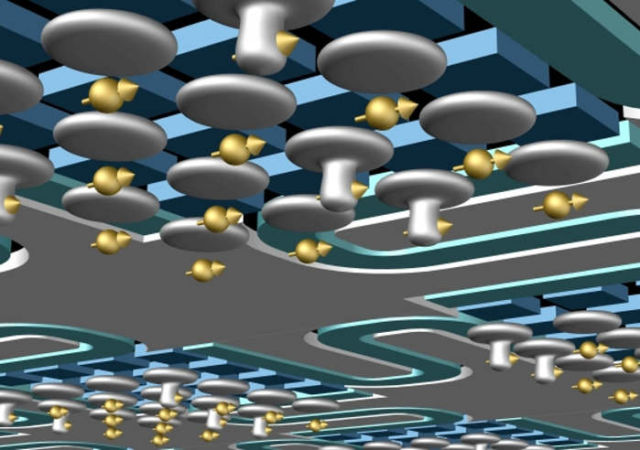A completely new architecture for quantum computing, based on what they’re calling ‘flip-flop qubits,’ invented.
Engineers at Australia’s University of New South Wales have developed a new architecture for quantum computing, that promise to make the eventual large-scale manufacture of quantum chips much cheaper and easier.
Above, artist’s impression of flip-flop qubit embedded in the silicon matrix of a chip. Illustration: Dr Guilherme Tosi
They have invented a radical new architecture for quantum computing, based on novel ‘flip-flop qubits.’
The new chip design, detailed in the journal Nature Communications, allows for a silicon quantum processor that can be scaled up without the precise placement of atoms required in other approaches. Importantly, it allows quantum bits (or ‘qubits’) – the basic unit of information in a quantum computer – to be placed hundreds of nanometres apart and still remain coupled.
The design was conceived by a team led by Andrea Morello, Program Manager in UNSW-based ARC Centre of Excellence for Quantum Computation and Communication Technology (CQC2T), who said fabrication of the new design should be easily within reach of today’s technology.
Morello, said:
“It’s a brilliant design, and like many such conceptual leaps, it’s amazing no-one had thought of it before.
What Guilherme and the team have invented is a new way to define a ‘spin qubit’ that uses both the electron and the nucleus of the atom. Crucially, this new qubit can be controlled using electric signals, instead of magnetic ones. Electric signals are significantly easier to distribute and localise within an electronic chip.”
In the single-atom qubit used by Morello’s team, and which Tosi’s new design applies, a silicon chip is covered with a layer of insulating silicon oxide, on top of which rests a pattern of metallic electrodes that operate at temperatures near absolute zero and in the presence of a very strong magnetic field.
source newsroom.unsw





Leave A Comment